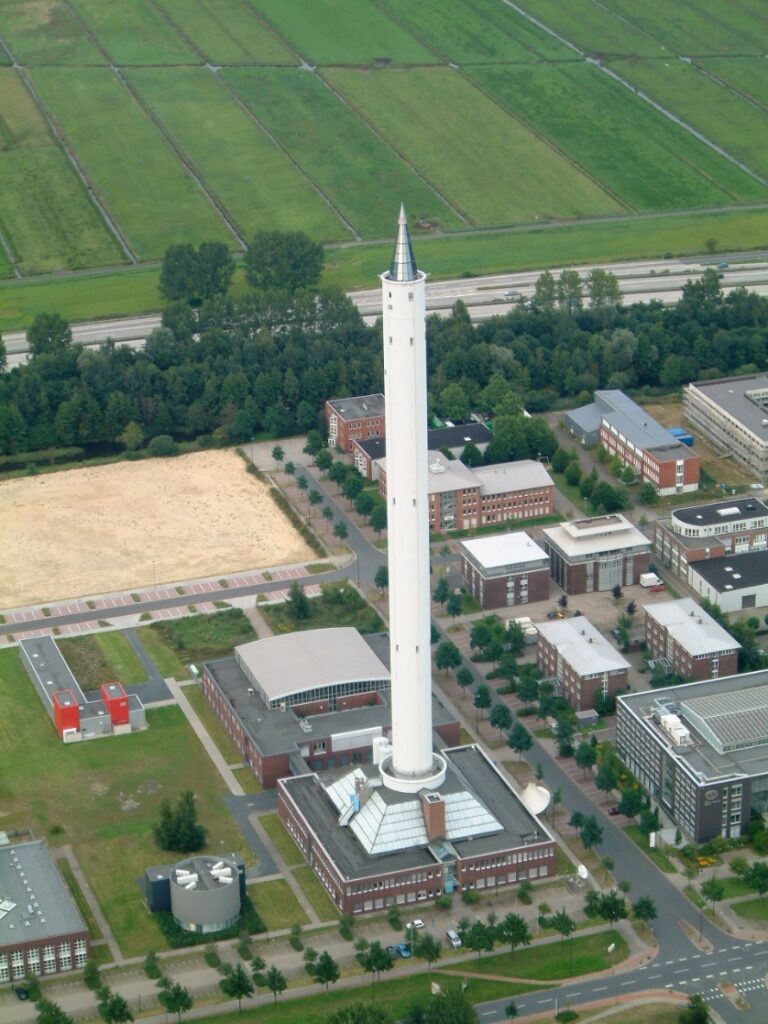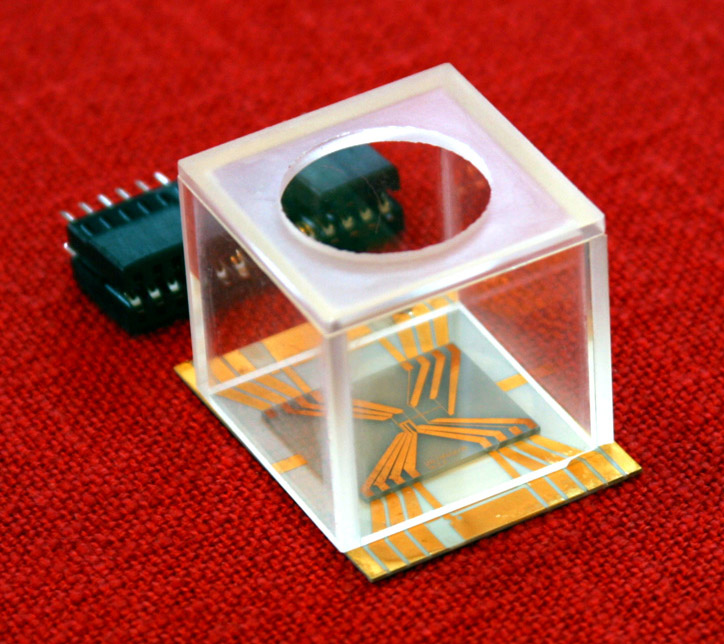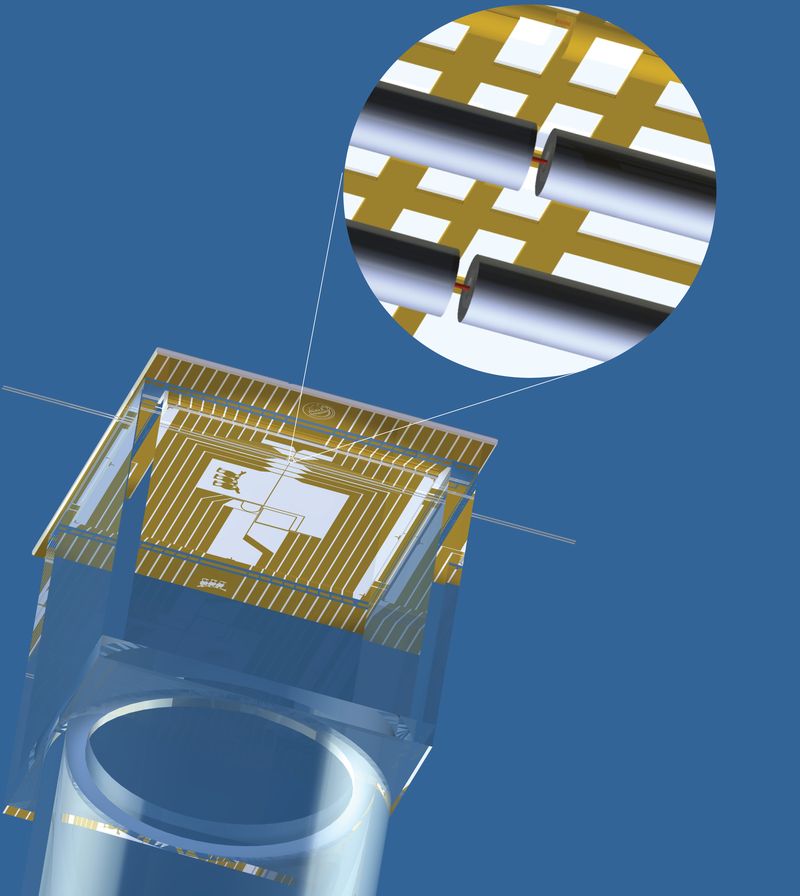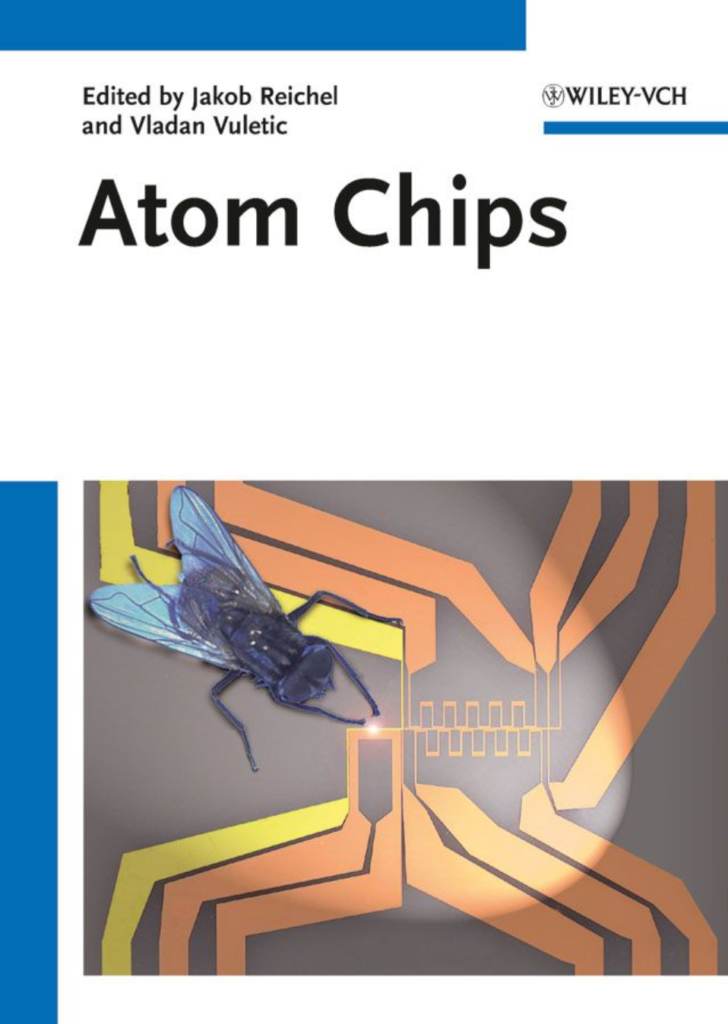Working with T. W. Hänsch, Jakob Reichel and his team demonstrated the first cold atom trap on a microelectronic chip in 1999 [1], and the first Bose-Einstein condensate on a chip in 2001 [2]. This became known as Atom Chips technology. Atom chips are used in some of the fastest ultracold atom sources, and provide strong, modulable and dynamic potentials for cold atom manipulation with unrivalled precision. Another domain where atom chips excel is when cold atoms an Bose-Einstein condensates are needed in “real-life” environments outside a research laboratory – such as precision measurements in free fall (see below). NASA’s cold atom laboratory aboard the International Space Station (ISS) is powered by atom chip technology [3].
Most atom chips contain current-carrying wires to generate magnetic potentials, which can be combined with other on-chip structures depending on the applications. Coplanar microwave guides excite atomic clock transitions or generate state-dependent potentials, and optical structures for trapping and readout have also been integrated. Their miniaturization and fast, low-power operation makes atom chips ideal for portable cold atom applications, such as atom interferometry, while their microscopically controlled “designer potentials” have enabled elegant original research in quantum metrology, one-dimensional quantum physics, atom-surface interactions, and many other fields. Our team has been at the forefront of atom chips research for many years.

As part of the first Quantus collaboration, we have provided the atom chips for the first BEC in microgravity, produced in a spectacular free-fall experiment in the 146m drop tower in Bremen, Germany. The project culminated with the demonstration a Mach-Zehnder atom interferometer operated with a Bose-Einstein condensate, using once again an atom chip produced in the ENS cleanroom.

Early atom chip experiments still needed a bulky vacuum apparatus with dedicated vacuum feedthroughs for each of the chip’s wires. Dana Z. Anderson and Jakob Reichel then pushed miniaturization and integration one step further by making the atom chip one of the walls of the vacuum cell. This powerful and radically simplified approach led to the foundation of ColdQuanta Inc. in 2007. ColdQuanta became the first company to offer commercial atom chip products.

To combine the versatility and integration of atom chips with the power of cavity QED, we started to develop miniature optical cavities based on optical fibers. This got us started on a new adventure, which is described elsewhere on this site.
[1] Reichel, J., Hänsel, W. & Hänsch, T. W. Atomic Micromanipulation with Magnetic Surface Traps, Phys. Rev. Lett. 83, 3398–3401 (1999).
[2] Hänsel, W., Hommelhoff, P., Hänsch, T. W. & Reichel, J. Bose-Einstein condensation on a microelectronic chip, Nature 413, 498–501 (2001).
[3] Aveline, D. C. et al., Observation of Bose–Einstein condensates in an Earth-orbiting research lab, Nature 582, 193 (2020).

